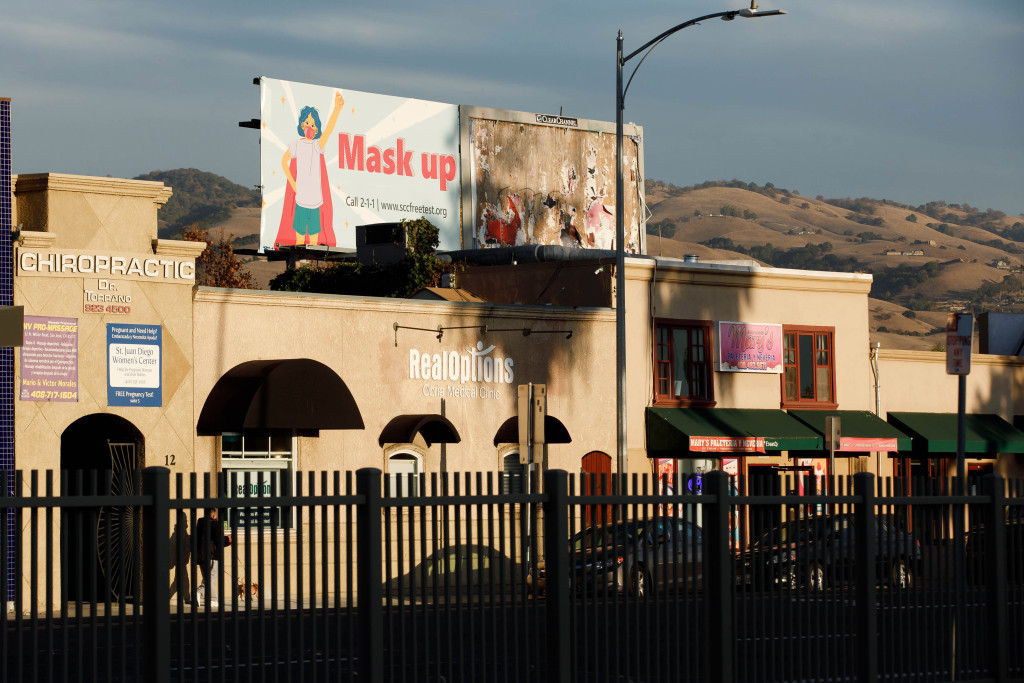San Jose leaders have nixed a highly-disputed plan to dot the city’s freeways with LED-illuminated billboards.
But that doesn’t mean that residents will be free of the signs entirely.
During a special meeting Thursday night, the San Jose City Council voted to shelf a years-in-the-making proposal to allow for up to 75 new free-standing digital billboards on private properties along the freeways, as well as an unspecified number of signs on private buildings in the downtown core.
However, the city council opted to continue moving forward with plans to erect smaller digital signs in the public right-of-way, such as on light poles and public restroom facilities, in the downtown core. The councilmembers also made it clear that they have no plans to block the construction of 22 new digital signs and free-standing billboards on city-owned sites, which the council separately approved more than two year ago.
The abrupt decision comes more than four years after San Jose leaders promoted the proposal for new digital signs to a top priority among city staff and only months after a broad base of residents — most of whom say they were just recently informed of the plan — submitted hundreds of emails and calls to city officials expressing their near-unanimous outrage over the idea.
Earlier this week, Councilmember Raul Peralez, who for years has been the most vocal proponent of putting new digital signs up across San Jose, issued a memo calling for the city to “completely halt” the proposal. Peralez’s memo marked a stark and unexpected reversal from his long-held support for new digital signs and the close advocacy work he had engaged in with billboard industry representatives to craft the city’s billboard plans.
During Thursday’s meeting, Peralez said, “in comparison to all the other pressing needs that we have in this coming year, the sign code should not take a priority amongst those.”
The rest of the council sided with Peralez, ordering city staff to immediately stop devoting time and funding to the proposal for allowing new signs on private freeway-facing properties and on private downtown buildings. At this time, it remains unclear as to whether the city could pick it back up at a later date.
John Miller, a leader behind the grassroots organization No Digital Billboards in San Jose, said Thursday evening that he was “guardedly optimistic” about the council’s actions.
“We think the council has been listening to the voice of the community and we think this is a very good sign,” Miller said, while acknowledging that he was still disappointed the city wasn’t planning to keep its ban on billboards in place entirely.
San Jose has prohibited the construction of new billboards on city-owned land since 1972 and has banned new billboards citywide on both public and private land since 1985. Proponents of the ban have long argued that billboards create visual blight, distract drivers and negatively affect the environment and surrounding wildlife.
By the end of this year, though, the new billboards will likely be erected on public land.
At the request of billboard representatives and business associations, San Jose has spent the past four years working to upend the ban and updates its sign ordinance.
And in September 2018, the city council partly paved the way for that.
At that time, the council voted 9-2 to allow digital signs on 17 city-owned sites that could accommodate up to 22 signs — both building-mounted signs in the downtown core and at least two free-standing digital billboards along the freeway.
The measure passed with almost no input from the residents due to what they say was inadequate community outreach by the city. On the day of the vote, the council only heard from billboard industry executives and lobbyists, San Jose’s tourism branch and a representative from the Lick Observatory — representing the only opposition and raising concerns about light pollution.
Although none of those signs have been erected yet, Deputy City Manager Kim Walesh told the council on Thursday that the city was expected to recommend issuing contracts for them “in the next several months.”










